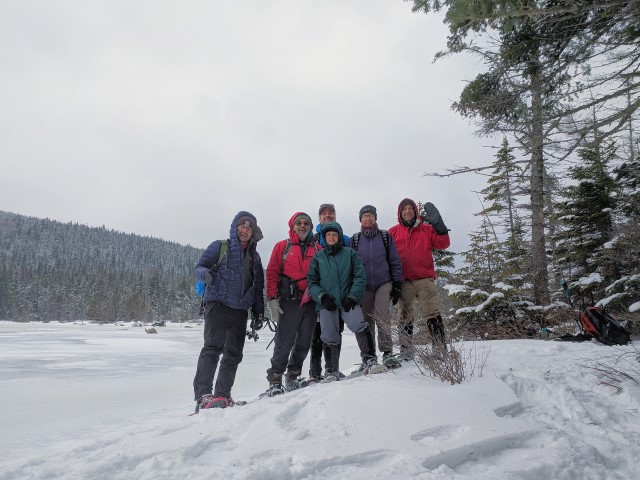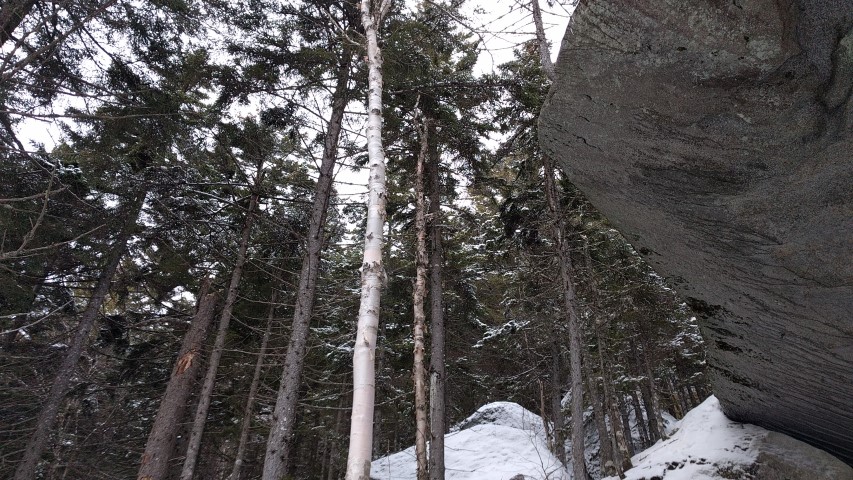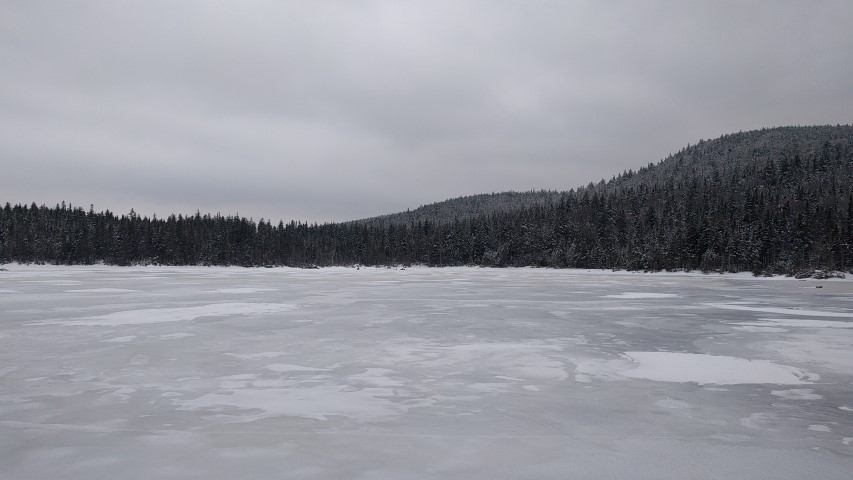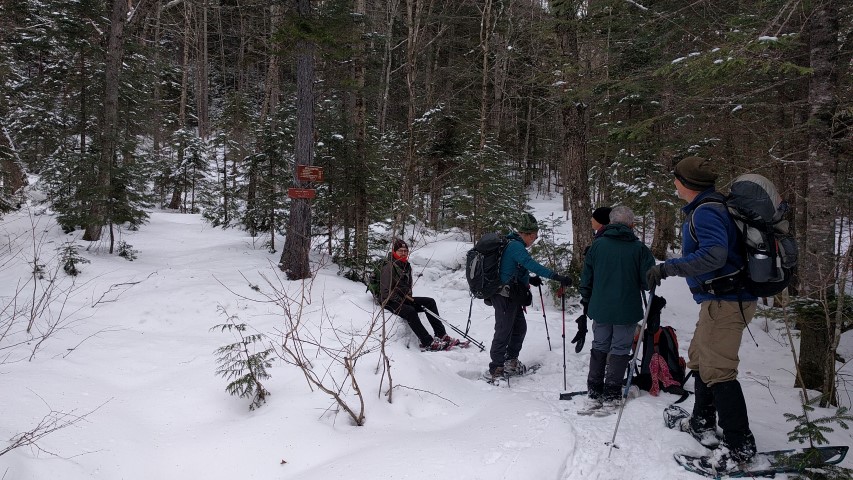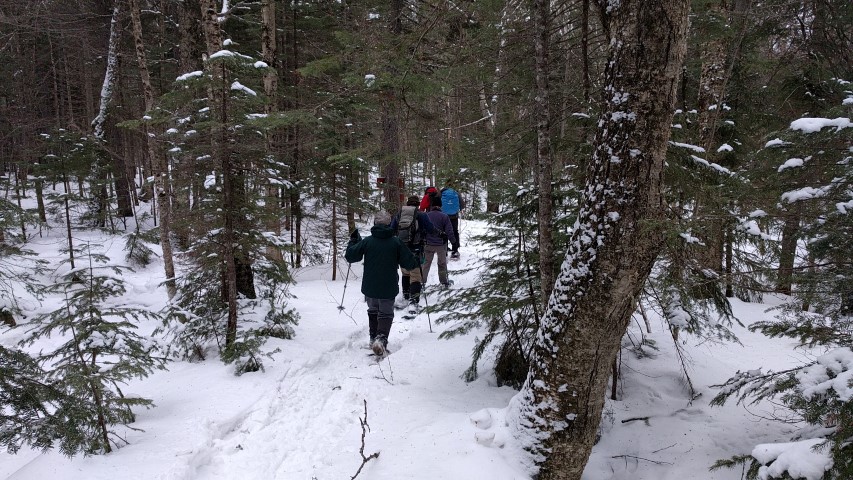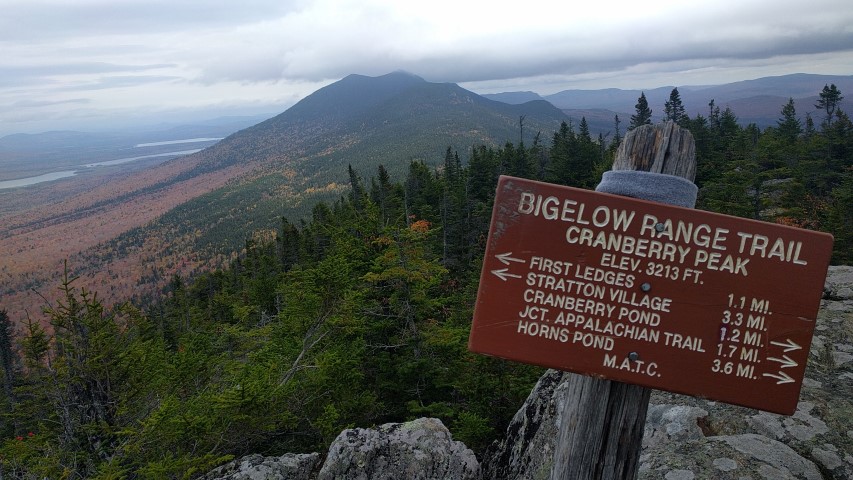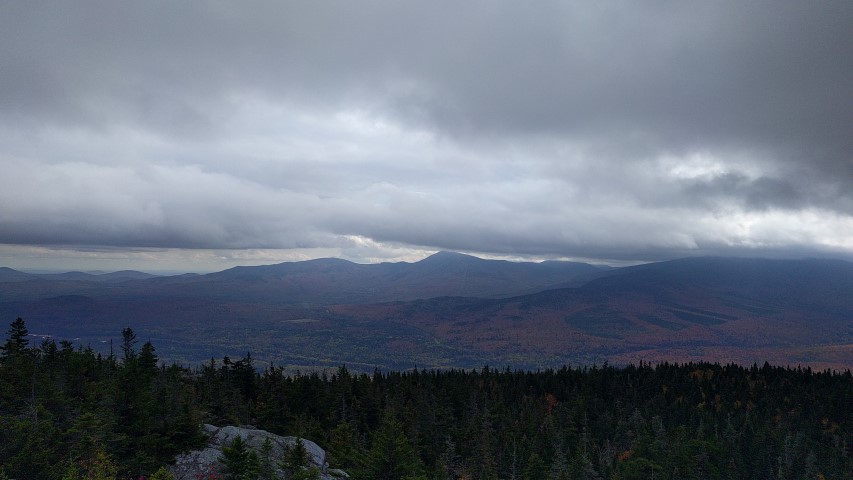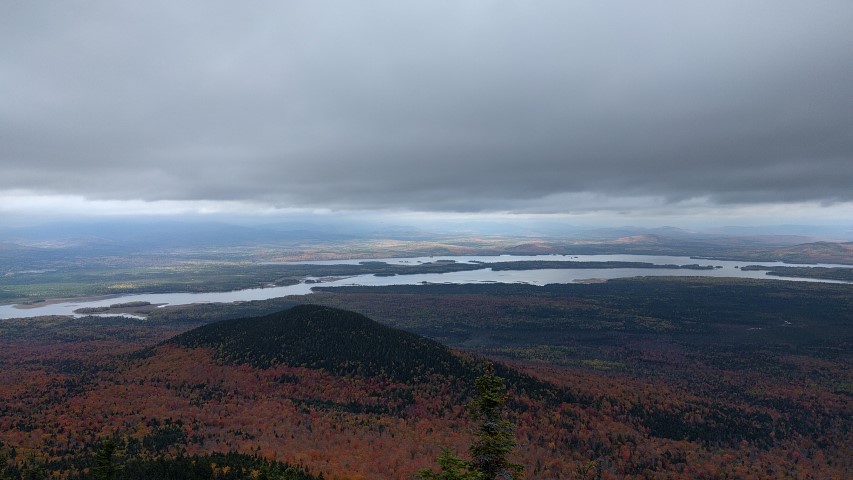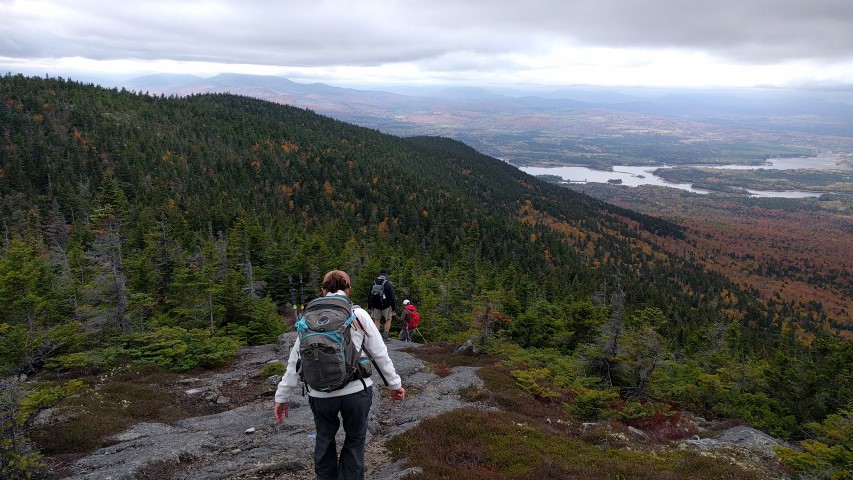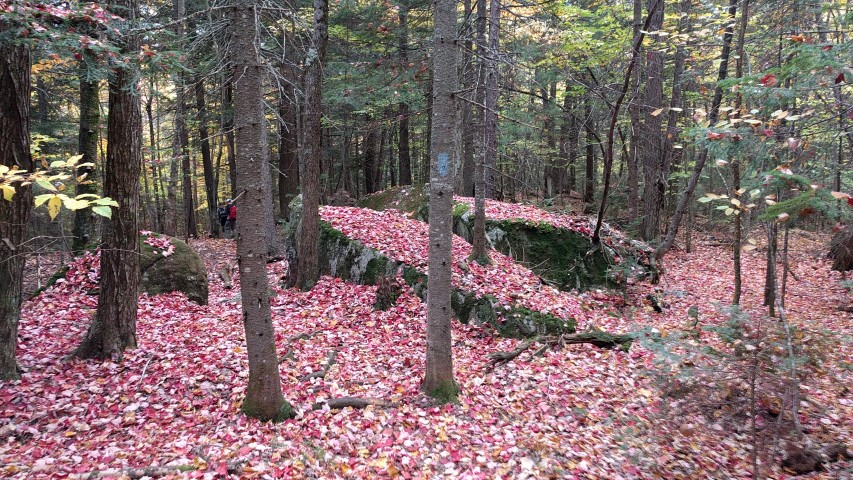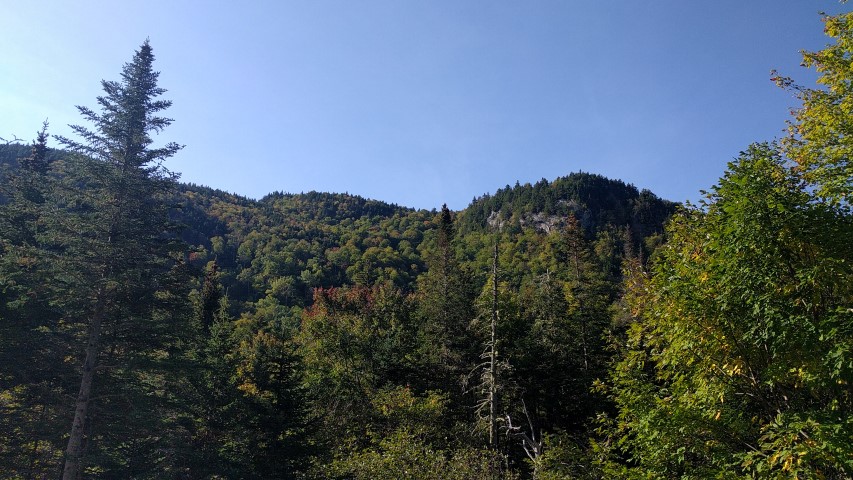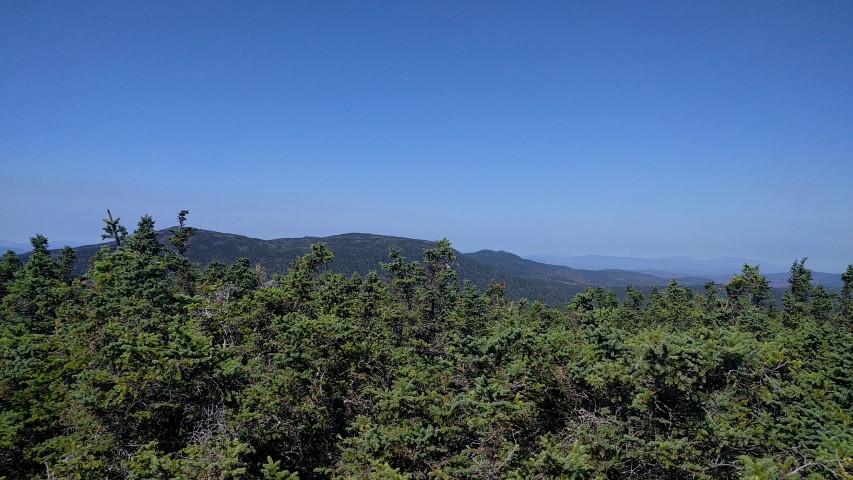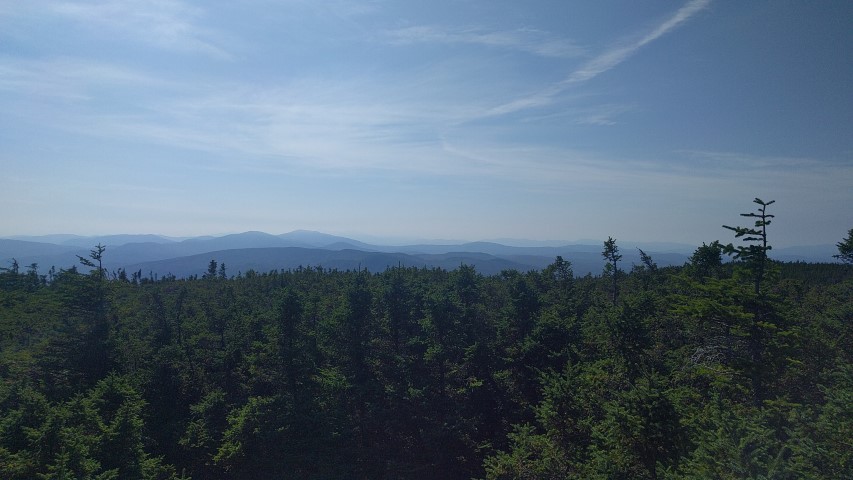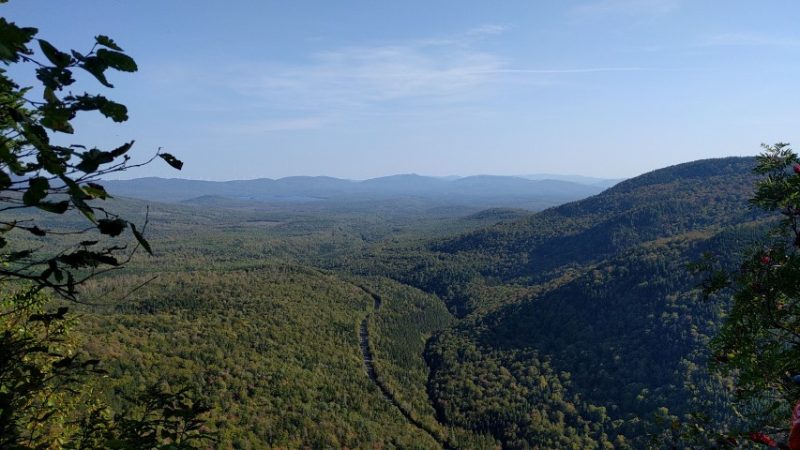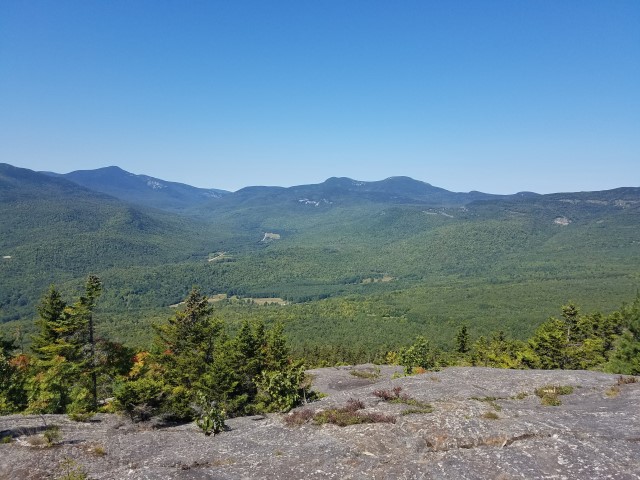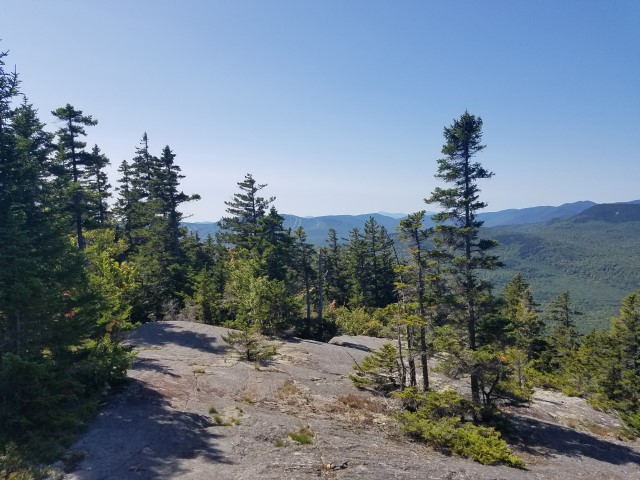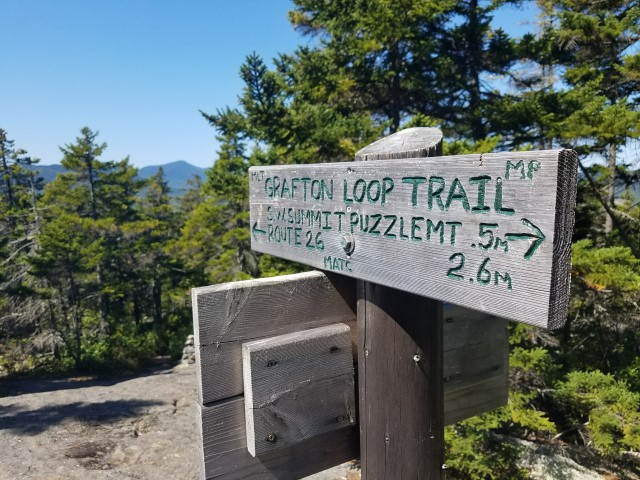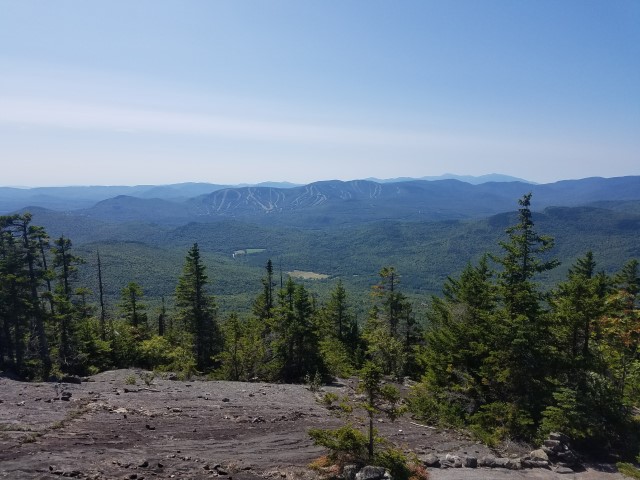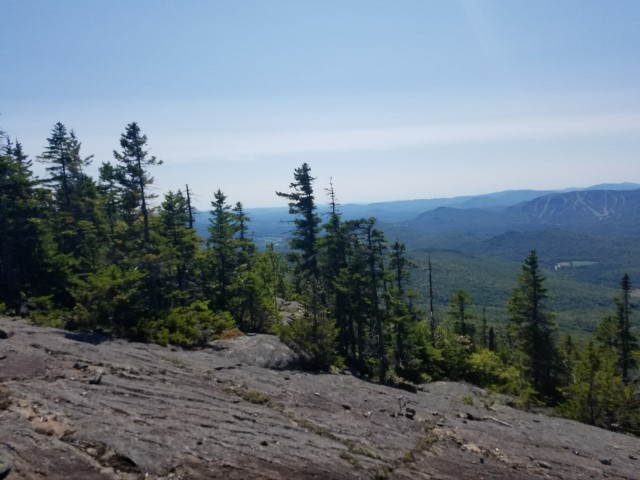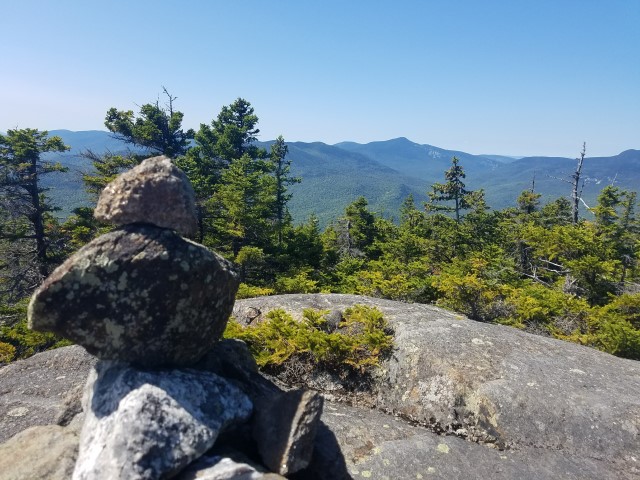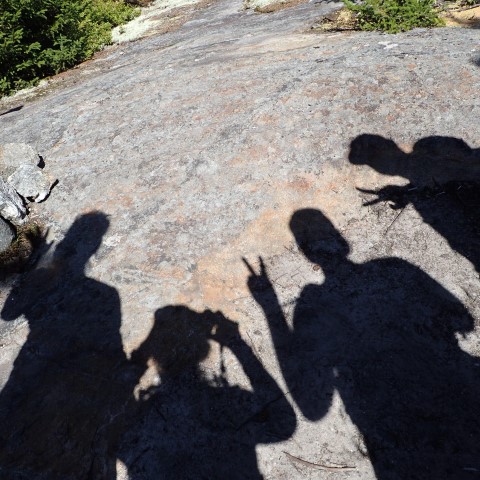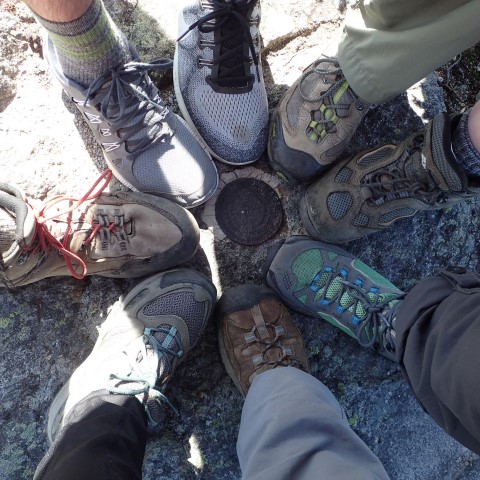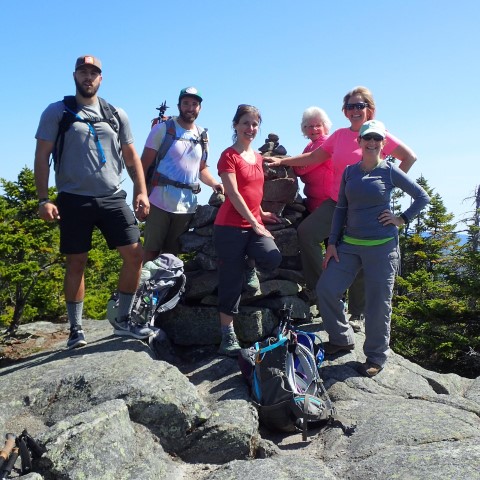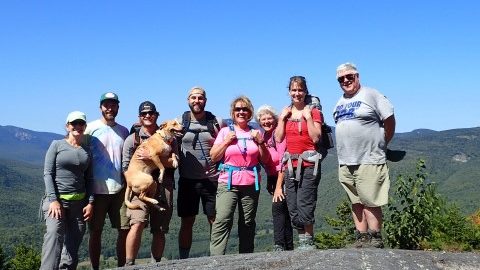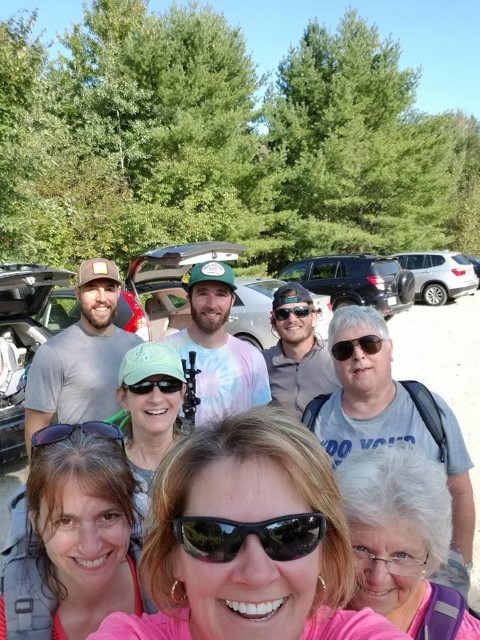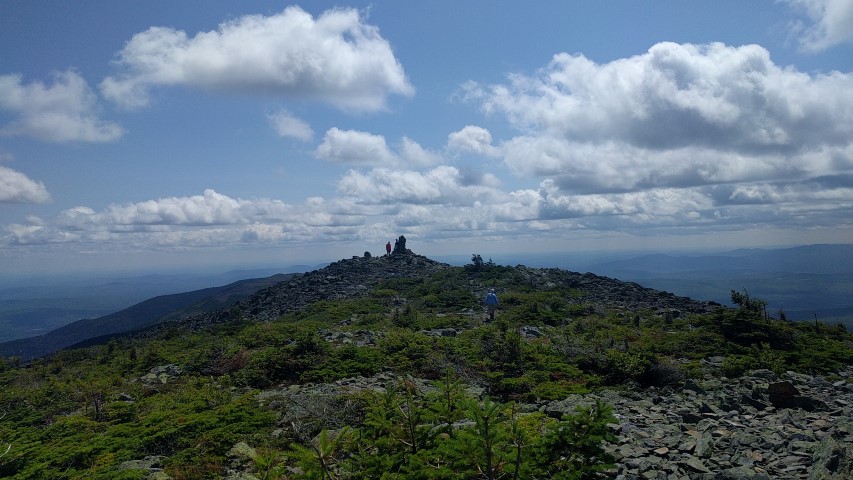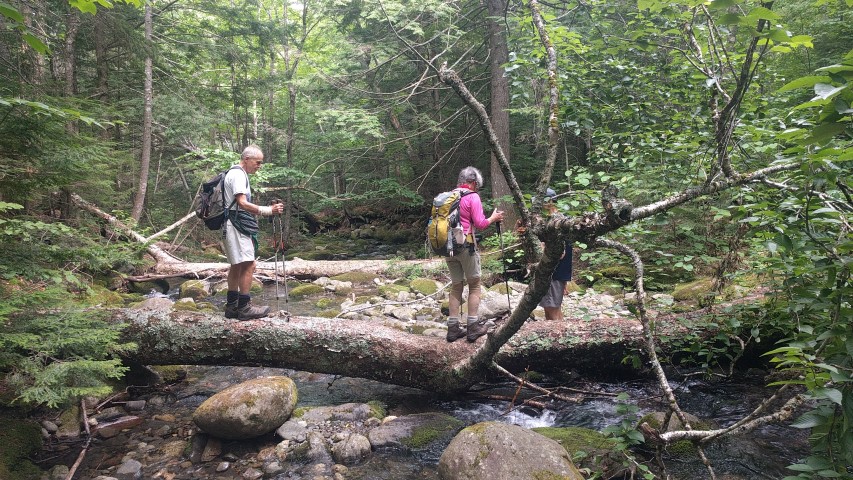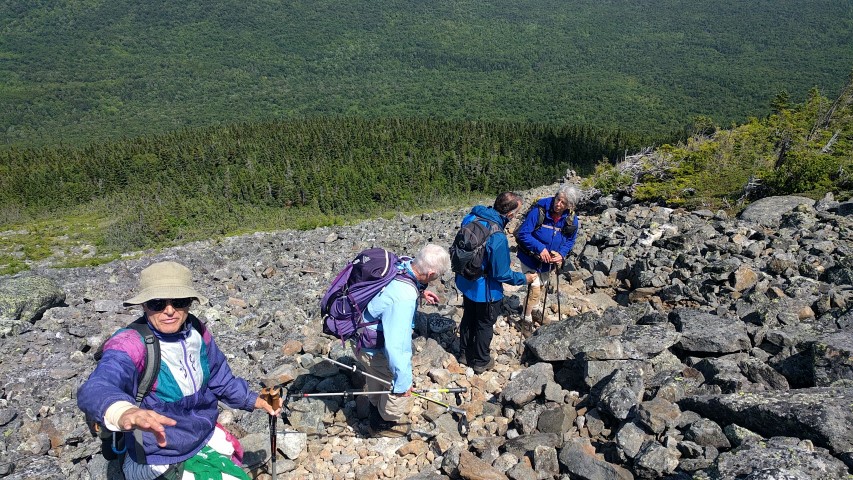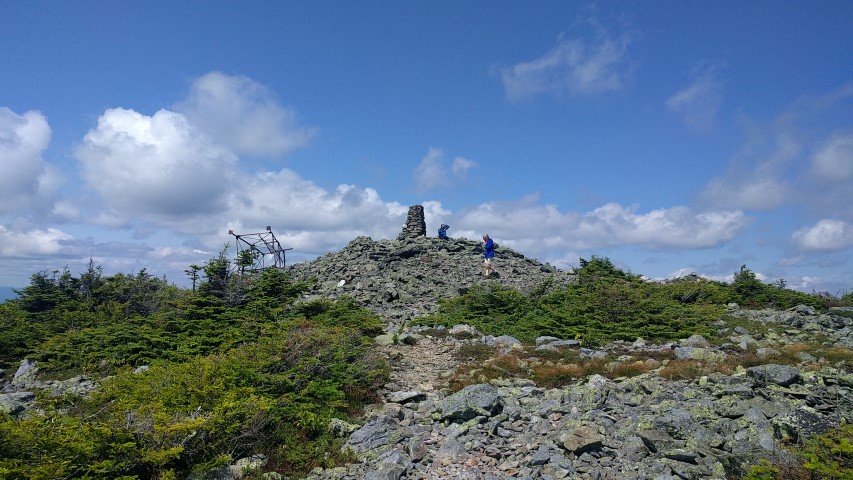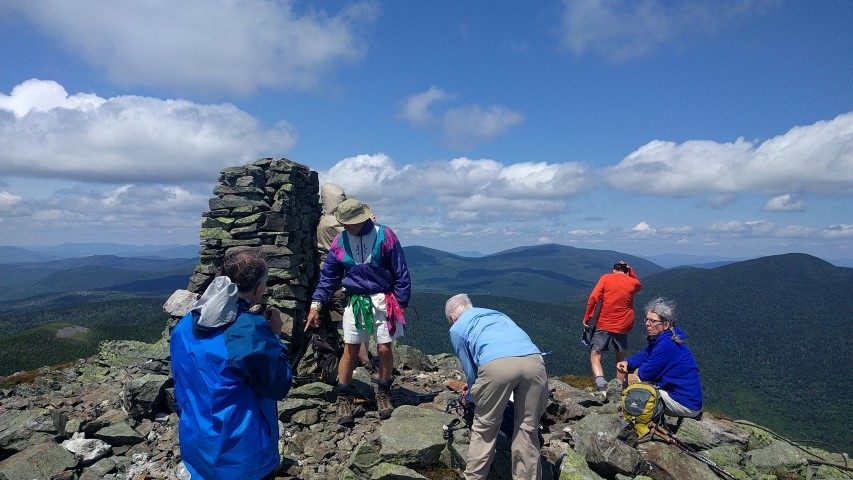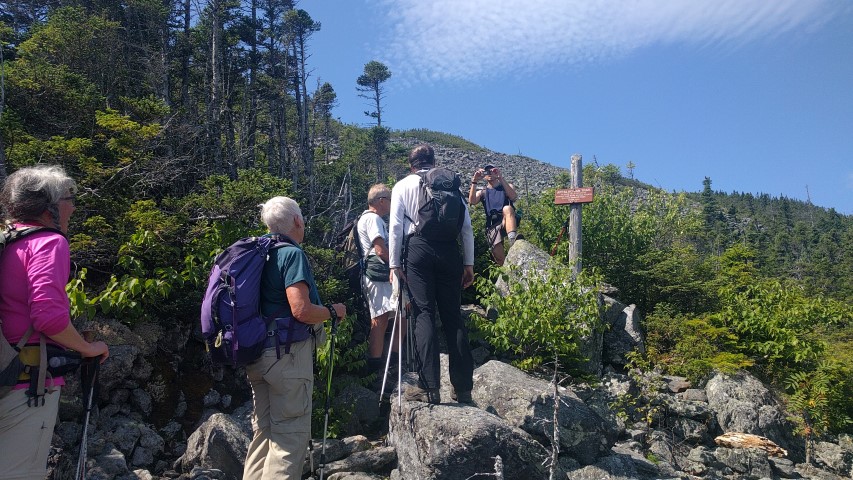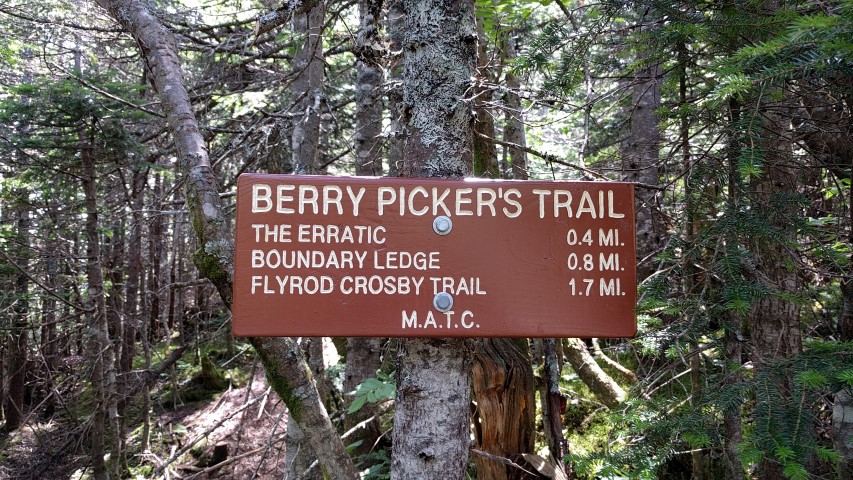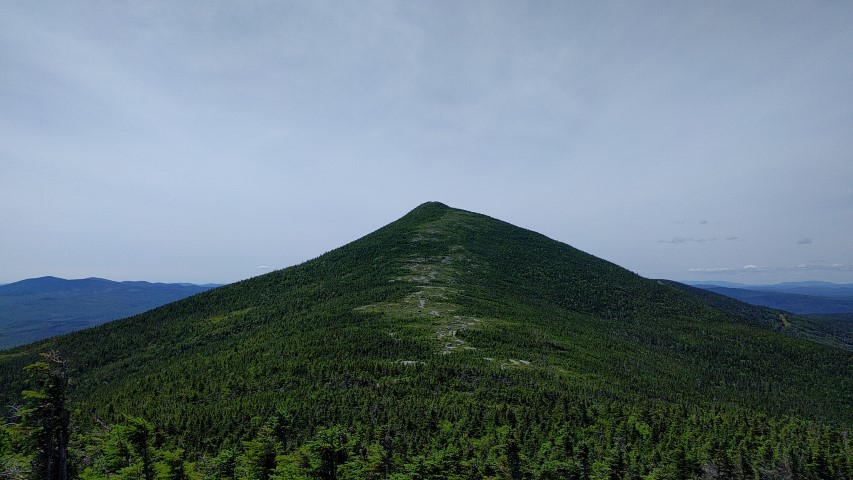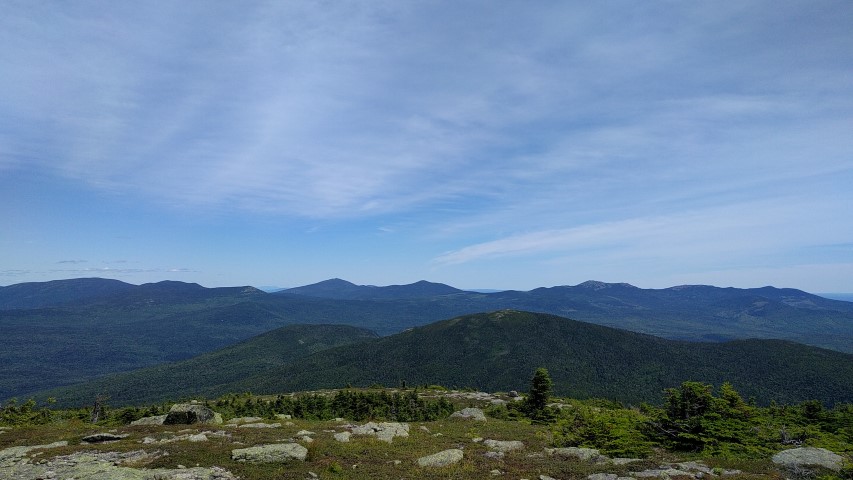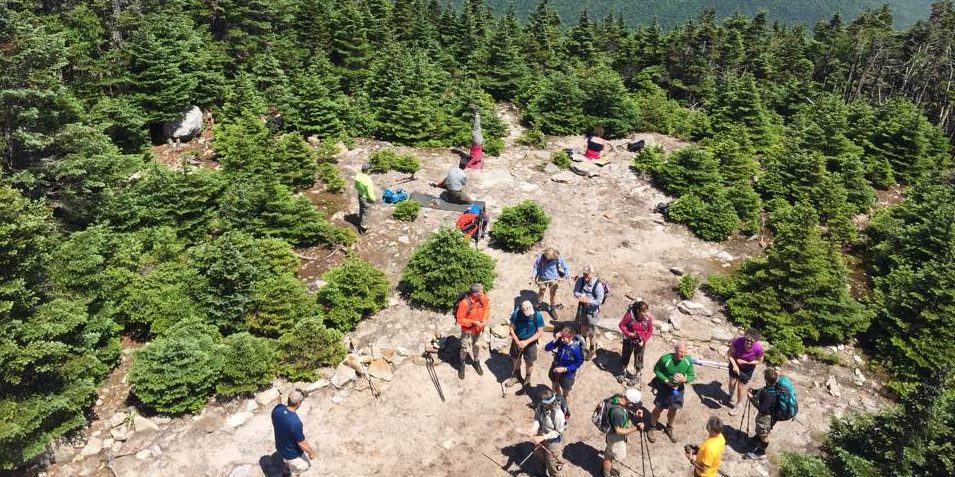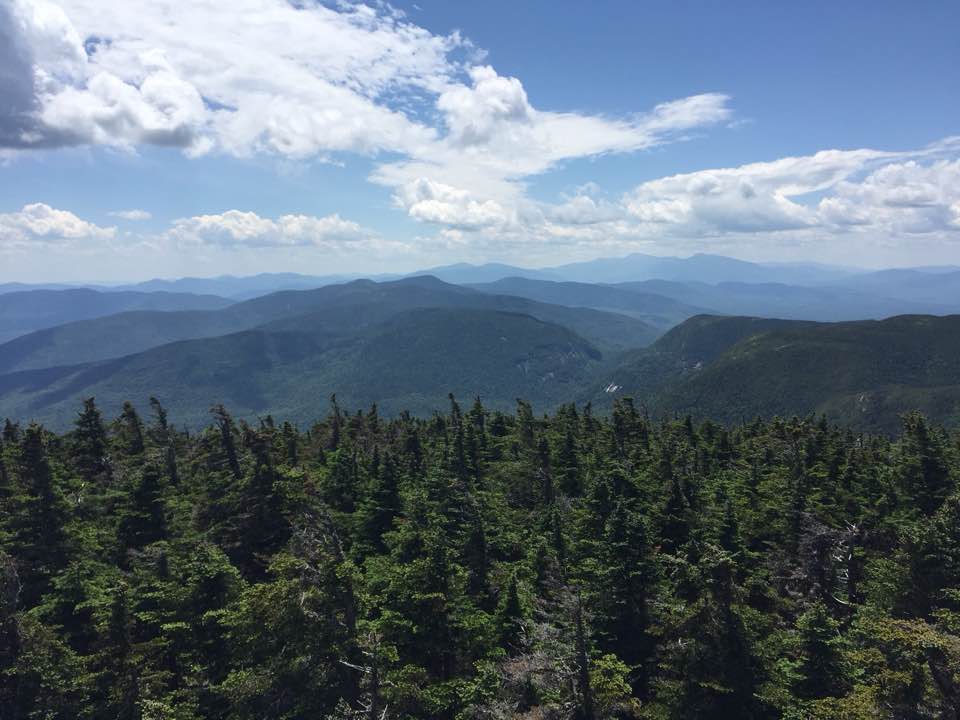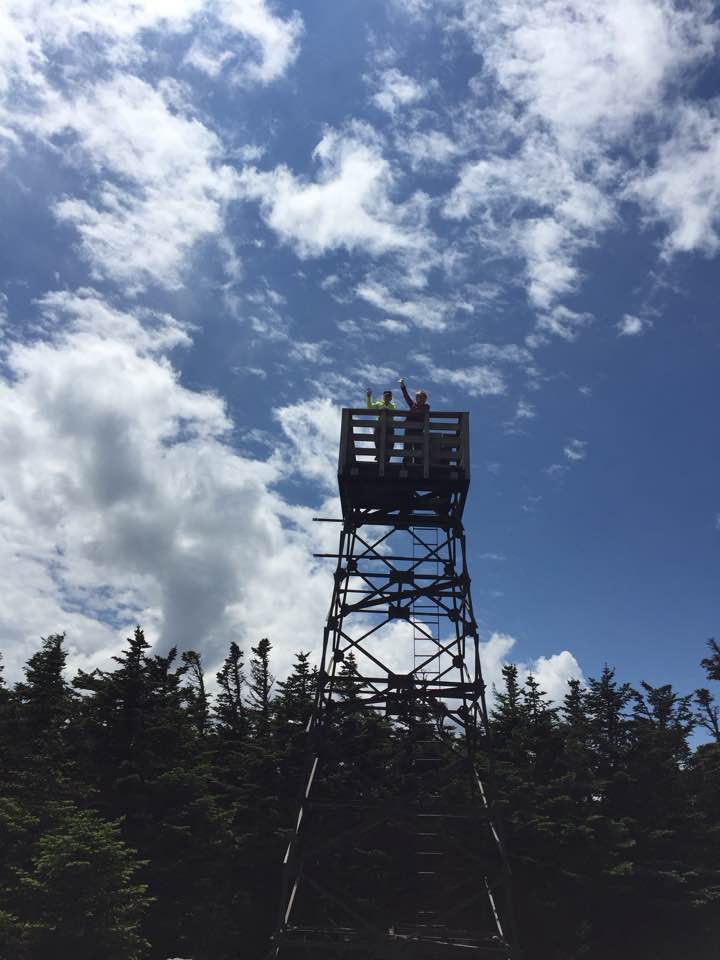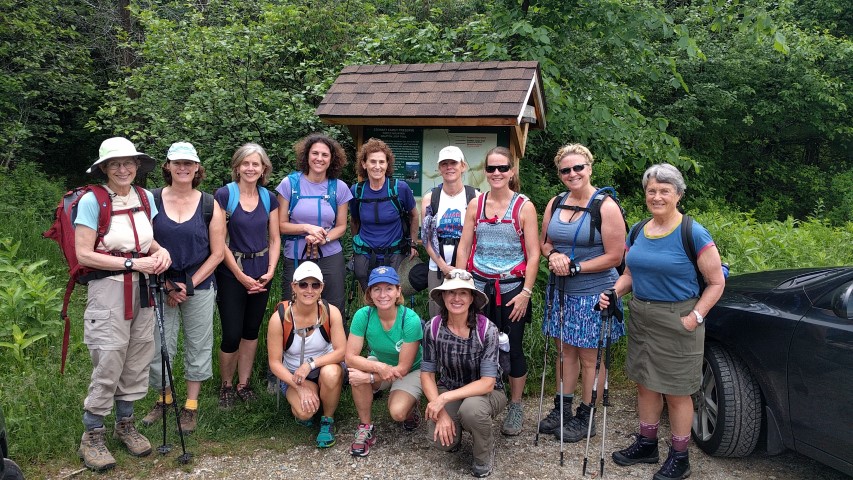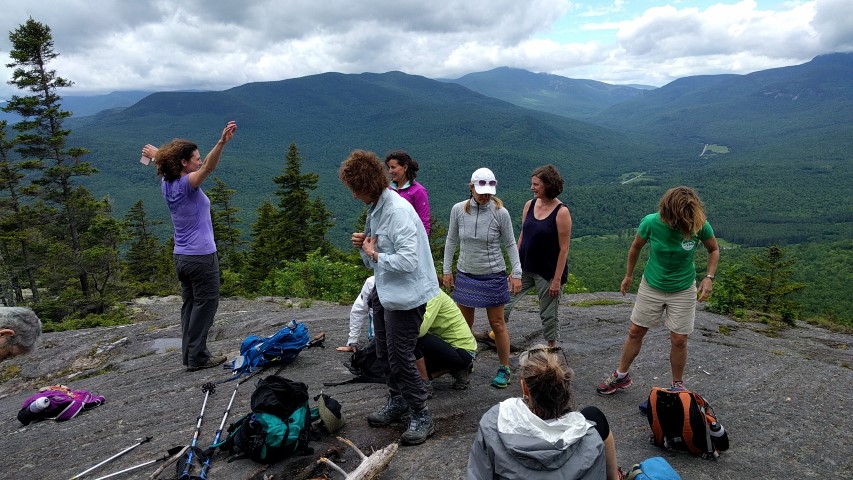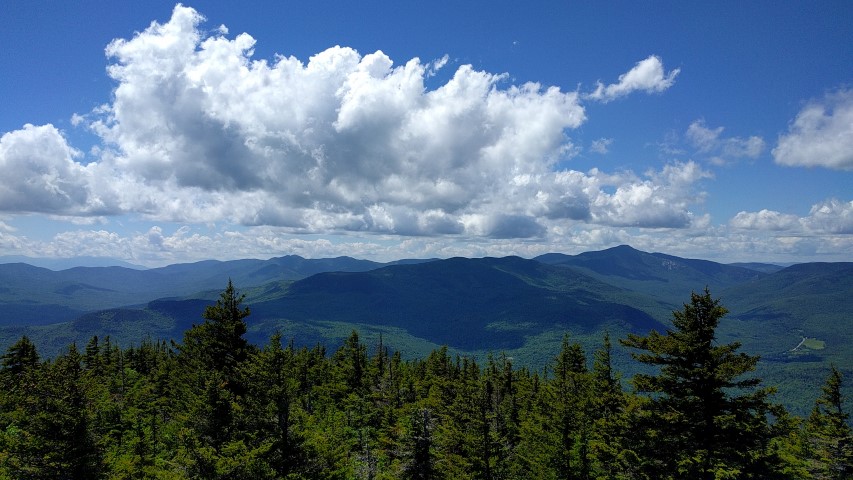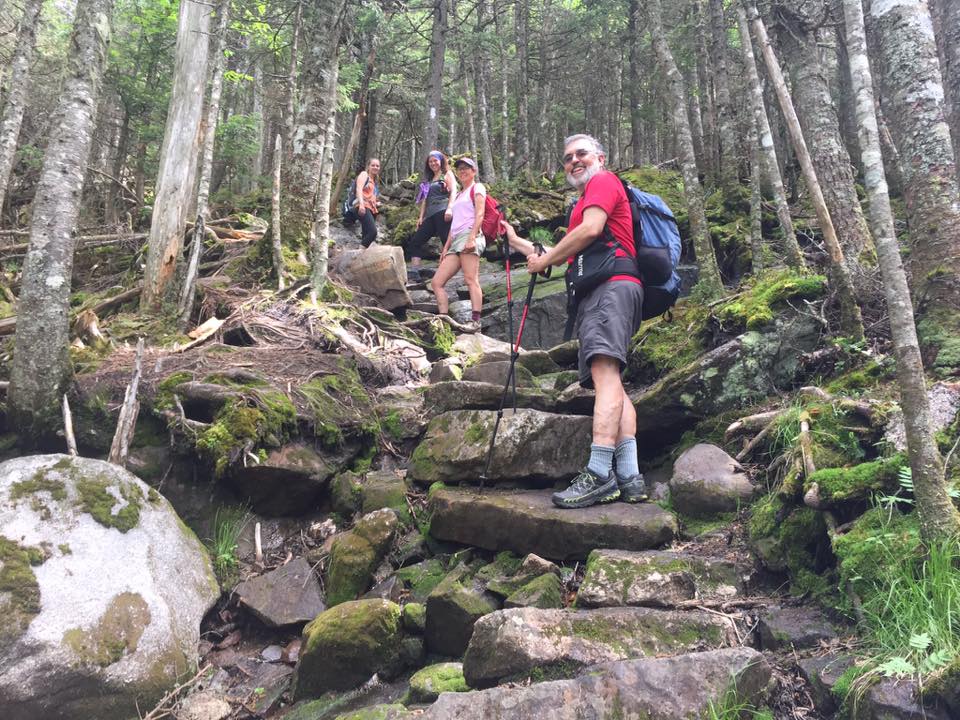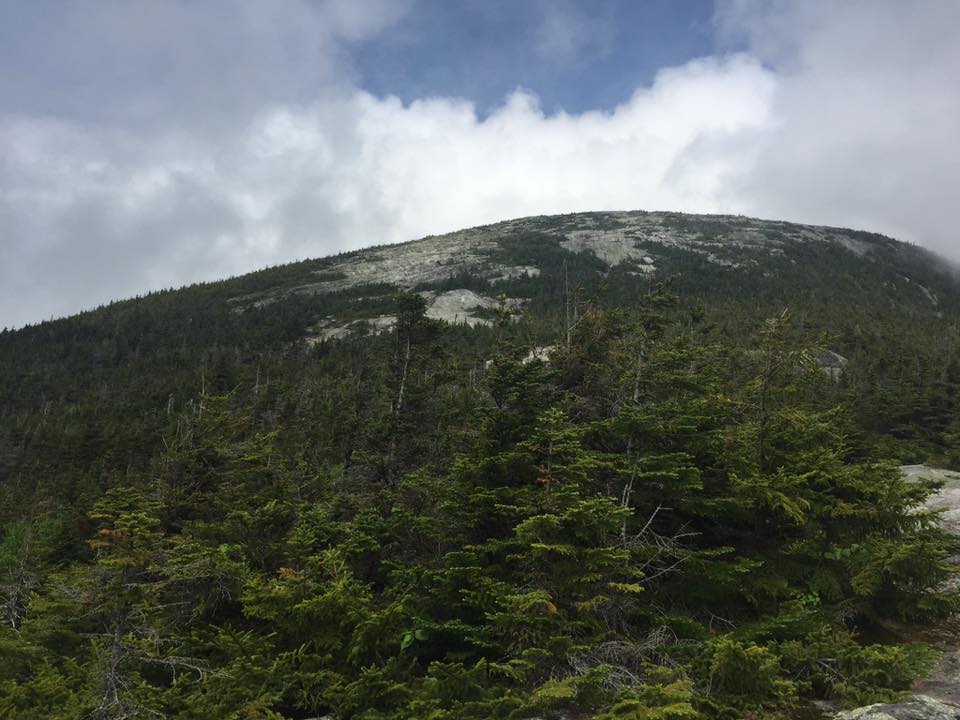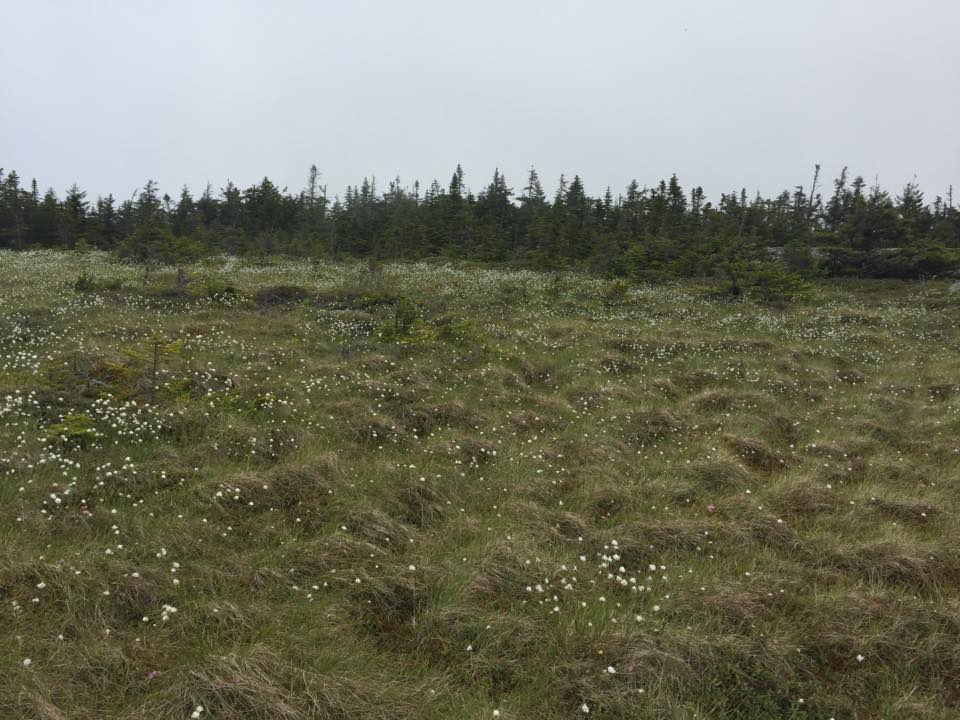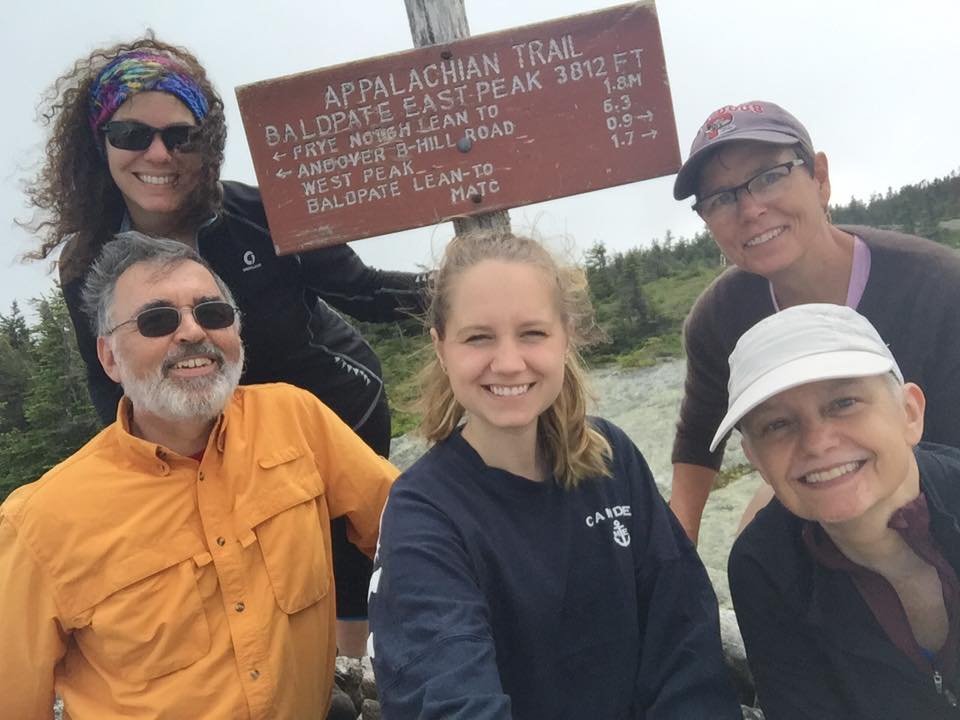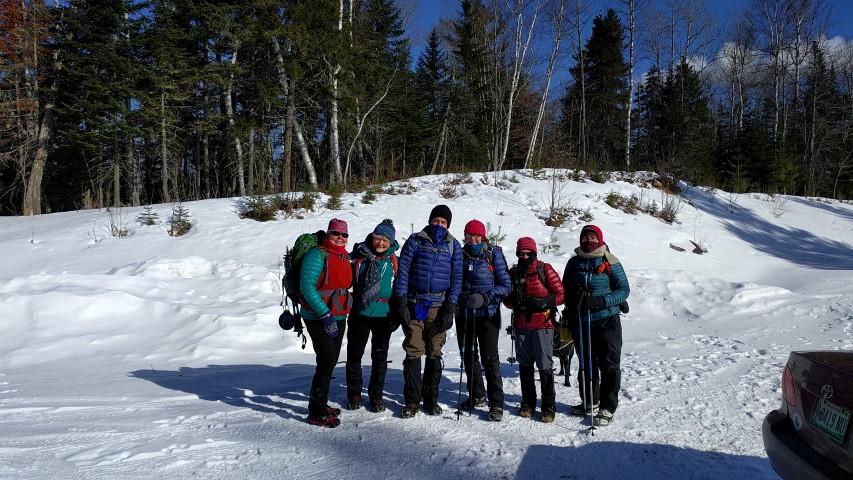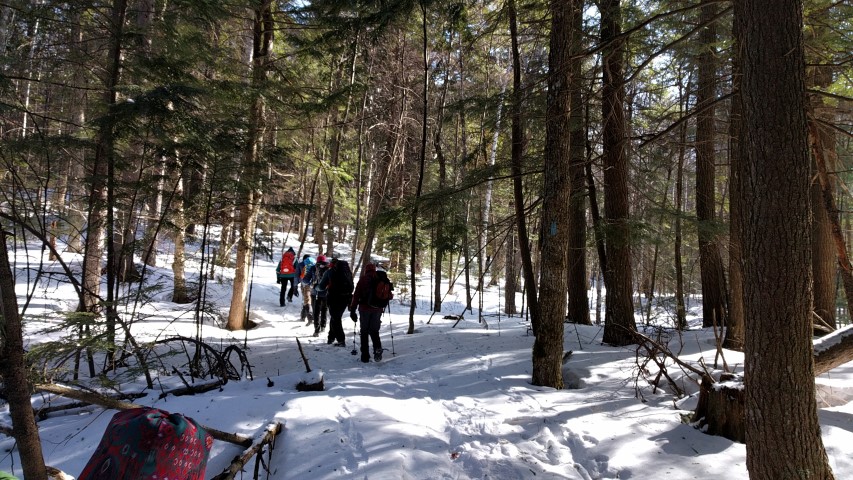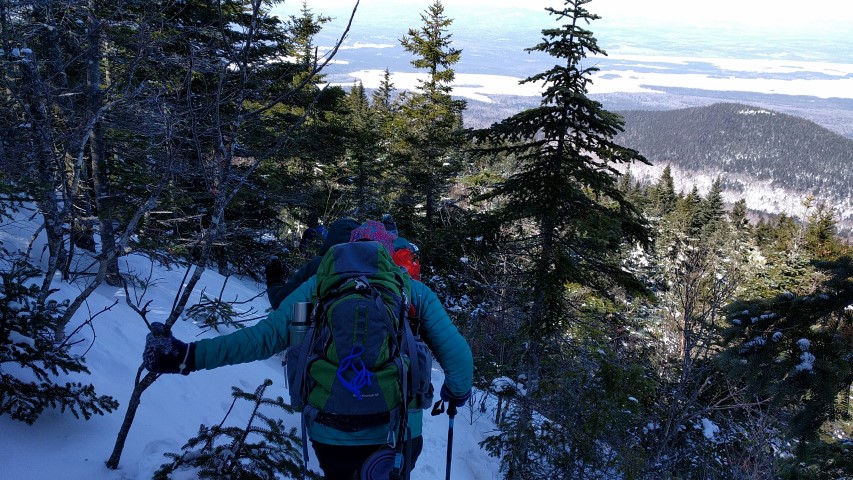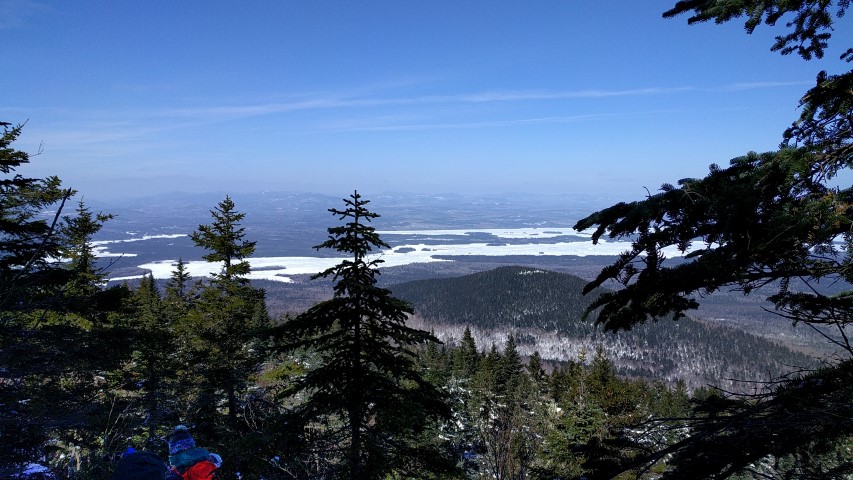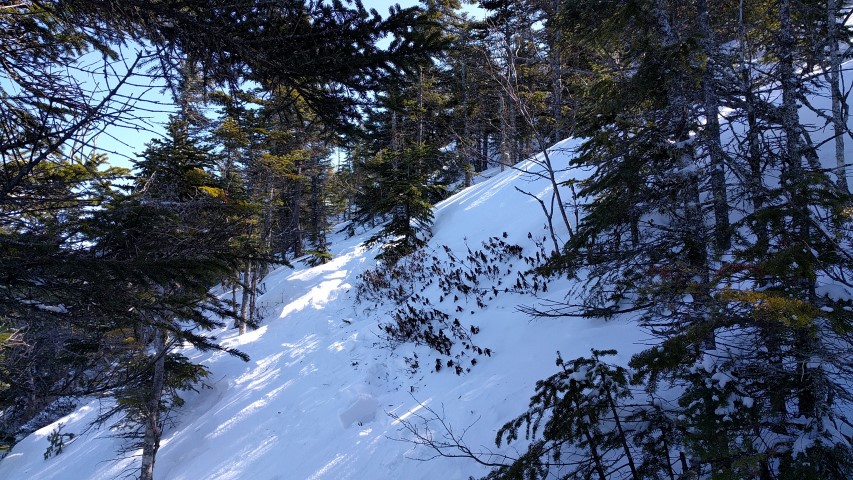By Louise Jensen
Saturday temps were predicted to be above freezing with partly cloudy skies and some high winds. Not a bad weather day for a winter hike. Our 2 cars with 6 hikers arrived at the A.T. trailhead on Route 4 in Sandy River Plantation around 10am where the parking lot was not plowed. No surprise there. Fortunately, we were able to squeeze the vehicles along the side of the road.
Snowshoes were the preferred mode of transport for the day. The trail was snow covered but broken out a bit and the surface was hard with some icy spots. Pretty decent conditions for snowshoeing. Although the wind howled a bit overhead, the trees, covered with that winter wonderland mantle of snow, kept us protected most of the time.
Heading out we descended slightly and crossed the bridge over the still flowing Sandy River. Ascending gradually, we reached a snowmobile/logging road at about 1 mile or so in. Looking both ways – it was “Snowdeo” weekend – we safely crossed over and reentered the woods. Eventually, we reached the Piazza Rock lean-to and the side trail to the Rock. We decided to trek on to Eddy Pond and explore the Rock on our return hike out. Further along the trail are some boulder caves but investigating those was not on the day’s agenda.
We continued up and down through narrow sections where snow laden branches crowded the trail. We passed Ethel pond on the right and Mud pond on the left, finally reaching Eddy Pond where the wind howled and lunch time was spent huddled under the canopy. Once nourished, we spent some time by the shore of the pond, admiring the cold gray starkness of the sky and the frozen pond surrounded by the evergreen-covered foothills of Saddleback.
The wind eventually chased us out and we trekked back to explore Piazza Rock. The rock formation is an enormous overhanging flat-topped boulder with trees growing out from the top. It is amazing to behold and we all had notions of what it looked like: a snake, a dinosaur head, even a sock puppet. It is definitely worth the .1 mile climb off the beaten path. Unfortunately, we couldn’t linger too long as it was growing late so we hurried out before it got dark. All would agree later that this was a really wonderful and fun winter hiking adventure!

